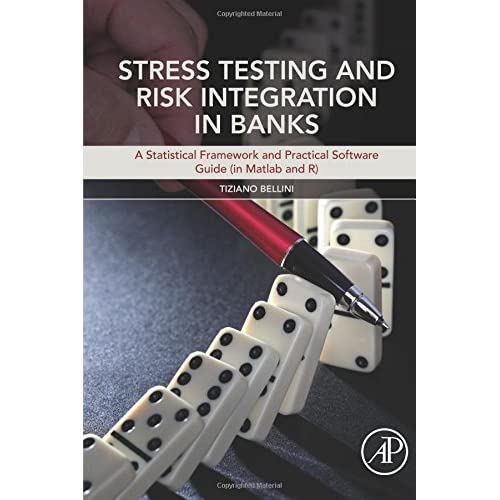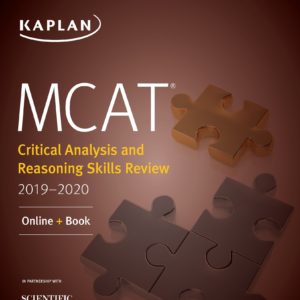Stress Testing and Risk Integration in Banks. A Statistical Framework and Practical Software Guide (In Matlab and R) by Tiziano Bellini (Auth.)
$35
Description
Stress Testing and Risk Integration in Banks. A Statistical Framework and Practical Software Guide (In Matlab and R) by Tiziano Bellini (Auth.)
Chapter 1
Introduction to Stress Testing
and Risk Integration
Chapter Outline
1.1 Antidote to the Crisis 1
1.1.1 What Went Wrong 2
1.1.2 Regulatory Responses 4
1.2 Stress Testing, Risk Integration,
and Reverse Stress Testing 7
1.2.1 Stress Testing 7
1.2.2 Risk Integration and
Reverse Stress Testing 12
1.3 Book Structure at a Glance 15
1.3.1 Organization of the Book 17
1.4 Summary 22
References 23
Since the 2007–09 crisis, increasing attention has been devoted to capital
adequacy and balance sheet integrity. Banks have been required to improve the
quality of their own funds, strengthen their liquidity structure, and enforce their
risk management processes. As a starting point, this chapter outlines the regulatory
response to the recent financial crunch. On this subject, stress tests
and risk integration are useful tools to enhance bank resilience against adverse
conditions. Then, Bank Alpha’s illustrative example is introduced to show how
an international bank runs its business. It serves to outline throughout the
book all complex challenges one needs to face when modeling risks. As in an
executive summary, this introductory chapter shows some of Bank Alpha’s main
stress testing and risk integration results. Finally, a practical guide to explore the
text is provided. It serves as a map for the reader looking for orientation during
the deep-dive journey.
1.1 ANTIDOTE TO THE CRISIS
A series of failures recently sharpened the question about the role of banks in a
modern economic system. On this subject, two ways may be followed to connect
savings and investments. Firstly, fund suppliers may directly meet the financial
demand by acquiring equity positions or debt instruments. However, the wide
range of costs associated with direct finance justifies a second way to link money
supply and demand. Financial intermediaries screen, monitor, and diversify risks
by providing credit to those needing resources.
It is worth noting that, in the recent past, banks progressively moved from
their traditional institutional background to a more marked economic value
Stress Testing and Risk Integration in Banks. http://dx.doi.org/10.1016/B978-0-12-803590-0.00001-1
© 2017 Elsevier Inc. All rights reserved. 1
2 Stress Testing and Risk Integration in Banks
creation perspective. This evolution raised a possible conflict with their social
role by highlighting the potential for systemic breakdown. In this regard,
given the nature of their operations, banks never hold sufficient capital to
guarantee full deposit withdrawals. Additionally, the opaque nature of financial
investments does not allow analysts to distinguish the problems specific to one
intermediary from those affecting the industry as a whole. As a result, the
distress of one entity may lead to runs on others as well. These are the reasons
why laws and regulations govern financial intermediation, as detailed in the
following sections.
1.1.1 What Went Wrong
Many economic crises in history originated as failures of financial intermediaries.
A few banks became bankrupt during the 2007–09 crisis, and many
more had impaired operations. Nevertheless, major disruptions occurred among
new segments of financial intermediation. A run on asset-backed commercial
paper (ABCP) liabilities was one of the main issues experienced during the
recent crisis. These short-term funding instruments were used to finance asset
portfolios with long-term maturities. ABCP issuers (conduits) performed a
typical financial intermediation function but they were not banks. In many
instances, banks were the driving force behind ABCP funding growth. They
sponsored these activities and provided the required liquidity. However, this
new structure shifted a component of financial intermediation away from its
traditional location. Additionally, money market mutual funds experienced a run
on their liabilities. This event, in turn, triggered an even bigger run on ABCP
issuers. The Lehman Brothers Business Case 1.1 exemplifies some of the abovementioned
financial intermediation failures.
Business Case 1.1 Lehman Brothers
Since the early 1900s Lehman Brothers had developed its banking practice,
becoming a well-known investment bank. In the first decade of this century, the
company widely expanded its services. The most complex products developed
in the wake of the financial deregulation belonged to its business. During the
period from 2006 to 2007, Lehman Brothers initiated a new strategy. The company
aggressively bought real-estate assets. At the end of its 2007 fiscal year, Lehman
Brothers held $111 billion in commercial or residential assets and securities, more
than double the $52 billion it held at the end of 2006, and more than four times
its equity. Market illiquidity and massive losses in this business caused rating
agencies and investors to express concerns in 2008. During that summer, the
financial situation of Lehman Brothers becomes unsustainable. The crisis became
public. On the weekend of Sep. 12–14, 2008, the government communicated its
intention not to bail out the firm. A meeting with the major Wall Street investment
banks was organized. A private solution similar to that for the Long-Term Capital
Portfolio L.P. structured in 1998 was planned. Despite the interest from Bank
of America and Barclays, the discussions ultimately failed. Suddenly, Lehman
Introduction to Stress Testing and Risk Integration Chapter | 1 3
Brothers realized that it would not be able to raise enough funds to open for
business the next day. Its board of directors voted to file for Chapter 11 bankruptcy
protection on Sep. 15, 2008. The bank was granted an opportunity to have certain
parts of its operations dismantled in an orderly fashion overseen by a bankruptcy
court.
The Lehman Brothers case revealed the major issues encountered during
the crisis:
● Level and quality of capital (capital ratios). The crisis showed there was
an insufficient level of regulatory capital to cover losses and write-downs
of some banks. Inconsistencies in the definition of capital across countries
prevented markets from assessing banks’ capital quality. A number of
banks continued to make large distributions. There were dividend payments,
share buybacks, and generous compensation payments even though financial
conditions were deteriorated. These losses destabilized the banking sector
and exacerbated a downturn in the real economy.
● Risk coverage of capital (leverage). High leverage operations and complex
securitization exposures were major sources of losses for many banks.
Nonetheless, their capital framework did not substantially capture these
risks.
● Illiquidity (liquidity ratios). Before the crisis, funding was readily available
at low cost. The rapid reversal of market conditions highlighted how
quickly liquidity could vanish and this could last for an extended period.
Many banks experienced difficulties managing their liquidity. Central banks
needed to take action to support both the functioning of money markets
and, in some cases, individual institutions. Business Case 1.2 focuses on
Northern Rock’s causes of distress.
Business Case 1.2 Northern Rock
Northern Rock was a building society (i.e., a mutually owned savings and
mortgage bank) until its decision to go public in 1997. This bank was a regionally
based institution, serving its local customers. Its success was mainly related to
the revitalization of the North East of England following the decline of traditional
industries, such as coal mining and shipbuilding. Northern Rock had larger ambitions.
In the 9 years after it had gone public to the eve of the crisis in Jun. 2007, its
total assets grew from £17.4 billion to £113.5 billion. Its liability structure reflected
this unusual dynamic by depending heavily on nonretail funds. By the summer of
2007, only 23% of its liabilities were in the form of retail deposits. The rest of
its funding came from short-term borrowing in the capital markets, or through
securitized notes. ABCP was the favored means to fund Northern Rock’s growth.
In the summer 2007 the subprime crisis started affecting banks’ balance
sheets. The demise of Northern Rock dated from Aug. 9. The news that BNP
4 Stress Testing and Risk Integration in Banks
Paribas was closing three off-balance sheet investment vehicles, with exposures
to US subprime mortgage assets, caused panic in the market. This occurred after
other investment vehicles experienced difficulties in rolling over their short-term
borrowing. On Aug. 9, the European Central Bank injected e94 billion into the
European banking system. A mix of unusual leverage and poisoned financial
instruments caused the Northern Rock liquidity crisis. In Sep. 2007 an oldfashioned
bank run occurred. Television viewers around the world witnessed
depositors standing in line outside Northern Rock branch offices waiting to
withdraw their money.
A regulatory response was imperative. Amendments to ongoing rules were
discussed and implemented, as described in the next section.
1.1.2 Regulatory Responses
As a response to the financial crisis, the US regulator introduced the Dodd-
FrankWall Street Reform and Consumer Protection Act 2010 (Dodd-Frank Act,
Pub. L. 111-203). A more comprehensive and global solution was proposed by
the Basel Committee on Banking Supervision (BCBS) through the so-called
Basel III accord (BIS, 2011). The Basel Committee on Banking Supervision
does not possess any formal supranational supervisory authority. Nonetheless,
all major countries align their regulatory standards to the Basel Accords. In
particular, after the so-called Basel I (BIS, 1988), there was a new accord
named Basel II (BIS, 2006) that introduced a three-pillar regulatory structure
based on minimum capital requirements (pillar 1), regulatory supervision risk
management (pillar 2), and market disclosure (pillar 3).
Basel II introduced three main innovations. Firstly, a refinement on risk
buckets for the capital <a=href=”https://darkslategrey-stork-415106.hostingersite.com/product/systems-analysis-and-design-6th-edition-dennis-test-bank/”> adequacy calculations. Secondly, internal risk-based
models became a new paradigm to assess banks’ minimum capital requirements.
Thirdly, operational risk was adopted as an additional pillar 1 component.
The financial crisis, however, induced the international community to start
discussing the creation of new regulatory standards. G20 leaders committed to
the development of internationally agreed rules to improve banking regulations.
Basel III did not revolutionize the structure of the Basel II accord. The
vast bulk of Basel II remains in force. Indeed, no substantial changes occurred
concerning the discipline regarding credit and operational risks. Nonetheless, a
reform characterized the trading book. Counterpart risk and credit valuation adjustments
were strengthened. Additionally, the following key changes enhanced
the overall regulatory architecture:
● Capital ratios. The capital of a bank serves as a buffer against unexpected
losses. Risk-based capital ratios are used to highlight the relationship
between capital and risk-weighted assets (RWAs) as detailed below:
Introduction to Stress Testing and Risk Integration Chapter | 1 5
Capital ratio = Regulatory capital
RWAs
. (1.1)
A few different definitions of capital (i.e., numerator in Eq. 1.1) may be
used for regulatory purposes. Basel III relies on three layers: common equity
(core tier 1 capital), additional tier 1 capital, and tier 2 capital. Common
shares and retained earnings are the most important own fund items
entering into the regulatory capital definition. Innovative and noninnovative
instruments belong to a broader tier 1 capital profile. Subordinated debts and
similar instruments belong to a more diluted tier 2 capital layer. In contrast,
the idea behind RWAs (i.e., the denominator in Eq. (1.1)) is to assign greater
weights to riskier exposures (e.g., a credit toward a high-standing central
government should have a lower weight compared with a high-risk newly
formed private firm). In line with pillar 1, the denominator in Eq. (1.1)
consists of the sum of market, credit, and operational RWAs. Chapters 3–5
will consider their computational details. Table 1.1 summarizes the Basel III
road map. It anticipates some of the key concepts that will be examined
throughout this book. In particular, some hints are provided on the regulatory
capital definition and the calculation of risk-based ratios discussed in
Chapter 6.
You must be logged in to post a review.





Reviews
There are no reviews yet.